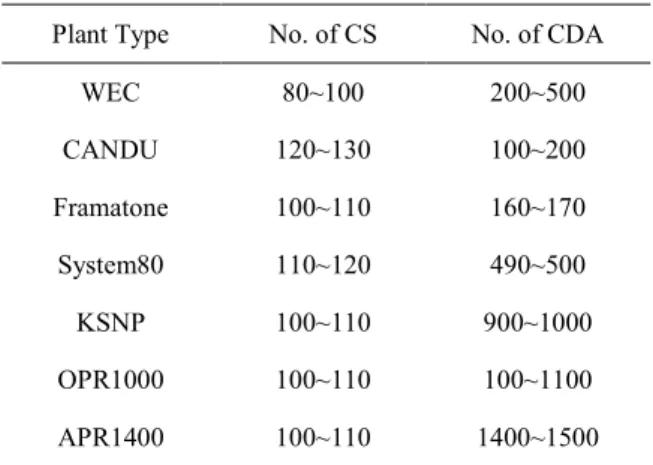2019 ⦽ǎႊᔍᖒ⠱ʑྜྷ⦺⫭ ⇹ĥ⦺ᚁݡ⫭ םྙ᧞Ḳ
21
Risk-Informed Based Graded Approach and Consequence Assessment on Cyber
Security Measure in Nuclear Facilities
Soo Min Lim*Korea Institute of Nuclear Nonproliferation and Control, 1534, Yuseong-daero, Yuseong-gu, Daejeon, Republic of Korea
*
s2min@kinac.re.kr
1. Introduction
Under the Act on Physical Protection and Radiological Emergency (APPRE)[1], Licensees of ROK are required to establish a Cyber Security Plans and Program that meets cyber security requirements for computer and information system at nuclear facilities security. Regulatory Standards, KINAC/RS-015[2] and KINAC/RS-019[3], are developed to ensure licensee to comply the regulatory requirements for cyber security. Moreover, independent guidelines and procedures for the reviews and inspections are developed to leverage the regulation quality of cyber security. In this paper, a practical methodologies are considered to take into account the effectiveness and efficiency of implementation on security measures with referenced methodologies. Further study for calculate or estimated that regulation of cyber security are effectively implemented, are remained.
2. Research Approach on Security Measures
2.1 Lessons Learned from US and ROK
According to Regulatory Guidance 5.71[4] and 10CFR73.54[5], US licensees are to apply the 150 cyber security measures onto their Critical System and Critical Digital Assets. Depends on the
characteristic of the nuclear facility, about hundreds and thousands of CDAs were classified as a result. Excessive efforts for application of a hundred security measures were required to the licensee and much time has to be spent on regulatory inspection and implementation. ROK regulatory situation are similar to US that about 2/3 of all systems are CS with APR1400 based plant and more than 60% of the total critical systems are found out to be a digital system. Table 1 describes the draft result of classification of CDA by each plant type. Those number for CS and CDA are not specified due to the information confidence of licensee.
Table 1. Draft Result of CS and CDA
Plant Type No. of CS No. of CDA
WEC 80~100 200~500 CANDU 120~130 100~200 Framatone 100~110 160~170 System80 110~120 490~500 KSNP 100~110 900~1000 OPR1000 100~110 100~1100 APR1400 100~110 1400~1500
Based on the draft result and basic principle, single CDA needs to address 101 security controls and 101,000 security controls are to evaluate the application of the security controls.
22
2019 ⦽ǎႊᔍᖒ⠱ʑྜྷ⦺⫭⇹ĥ⦺ᚁݡ⫭םྙ᧞Ḳ2.2 NEI 13-10 [6]
The main concept of the document, NEI 13-10, is to screen low-consequence CDAs and provide criteria to categorize the existing CDAs into four different functions types, such as, Emergency Preparedness (EP), Balance-of-Plant (BOP), Indirect, as Non-Direct (ND), and Direct CDAs. Based on the categorization result, it also provides the minimum security controls for CDAs. Fig. 1 describes the consequence assessment that provides and illustrate the guidance of categorizing low consequence CDAs into Emergency Preparedness, Balance of Plant, and Indirect CDAs.
Fig. 1. Consequence Assessment in NEI13-10.
2.3 Consequence-Based Approach on ROK
Initial plan and process for applying NEI 13-10 were reviewed. Security measures and the method for categorizing current CDAs were reviewed as well. Based on the consequence assessment, current CDAs were screening into Direct and ND CDAs.
Fig. 2. Classification Criteria for Direct and ND CDA.
For Direct CDAs, necessary security controls are addressed base on their attributes and for Non-Direct CDAs are streamlined the means into baseline controls.
3. Conclusion and Further Study
As a result, an estimated number of CDA for a single facility was almost 1700. After taking consequence assessment on CDAs, it is categorized into 600 for Direct CDAs, and 1100 for Non Direct CDAs. From this result, the estimated reduction of evaluation process for application of security controls is almost one-third of applying 101 security controls for all CDAs. Further study for finding efficiency and effectiveness of implementation methods, verifying on alternate measures, and detailed verification for implementation method are remained for further study.
REFERENCES
[1] Enforcement of Regulation Act on Physical Protection and Radiological Emergency, Nuclear Laws of ROK, Dec. 2017
[2] Regulatory Standard for Security for Computer and Information System of Nuclear Facility, KINAC/RS-015, Dec. 2015
[3] Regulatory Standard for Classification on Critical Digital System of Nuclear Facility, KINAC/RS-019, Dec. 2015
[4] Cyber Security Program for Nuclear Facilities, RG5.71, Apr. 2015
[5] Protection of Digital Computer and Communication Systems and Networks, 10CFR73.54, Aug. 2017 [6] Cyber Security Control Assessment, NEI 13-10,

